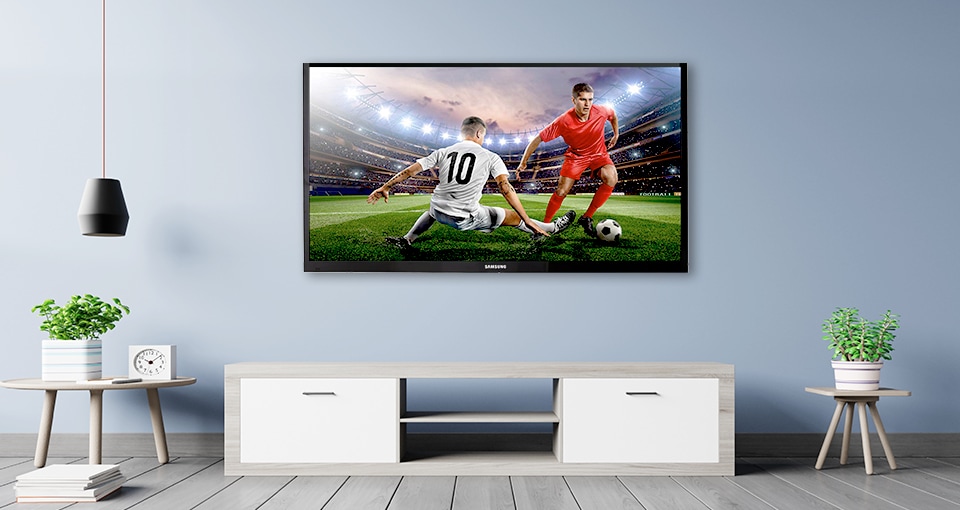What Is The Difference Between OLED And QLED TV?

Abhik’s parents were glued to the television together every day after work. It was their only source of their entertainment ever since Abhik had moved to another city for his new job. The television, as old as Abhik himself, had been a steady companion for their parents for all these years but now Abhik wanted to gift a new television set to his parents this Diwali so they could enjoy their favourite movies together on a bigger screen.
Abhik was going to purchase the latest television on Bajaj Finserv EMI Store so he didn’t have to worry much about the cost of the television. Bajaj Finserv EMI Store helps you pay off the purchase value in easy installments, unlike those hefty credit/debit card bills. With the EMI option, you also get the liberty to choose from a higher end of television sets, that are in vogue today, with cutting-edge technologies, that make watching TV not just an activity but an experience.
Abhik wanted to splurge a little and buy for his parents a television loaded with the latest features and properties. But his only worry was finding the best model within his budget. While looking at the models, he often came across two similar-sounding terms: QLED and OLED.
If you too are exploring new entrants in the television segment, you must have encountered these two terms, which may sound similar but are two strikingly different technologies.
Let’s look at the difference between OLED and QLED in detail.
-
QLED: Stands for Quantum Light-Emitting Diode. Now, to understand what a QLED television is, think of it as your usual run of the mill LED TV but with “quantum dots” embedded into its LCD panel. Now, what are quantum dots, you may ask. To answer this simply, quantum dots are small nanoparticles that make the panel brighter and more vibrant to look at. QLED panels enhance color and contrast, boosting the capabilities of HDR and 4K images compared to other non-quantum dot LCD-LEDs. In a nutshell, the key difference in QLED TV vs OLED TV is that in QLED, the technology basically relies on two processes: dimming the LED backlights and using the shutters to block the remaining light to produce true blacks. It is important to note here that QLED is relatively a newer technology and has been brought in vogue since 2017, mainly by Samsung.
Additional Read:What is the top-selling TV brand in India?
-
OLED: Stands for Organic Light-Emitting Diode. They key difference in OLED TV vs QLED TV is that LED TVs don’t need a backlight because each pixel produces its own light. In an OLED TV, every pixel is a tiny LED light that can produce both light and color in a single element. In an OLED panel, which was pioneered by LG, the most attractive feature was its blackest of black. Unlike a QLED or LED TV that dims its backlight and blocks what remains for dark scenes, an OLED TV simply turns off its pixels. Now, when the pixel has been turned off, the TV emits no light and no color, making it as dark as the TV panel when switched off. Simply because of this factor, the contrast factor in an OLED TV is indisputably jarring.
Now that you have understood the key differences between OLED and QLED TV, let’s look at a few important factors and determine who emerges as the winner in a OLED vs QLED TV match up before making your purchase on the Bajaj Finserv EMI Store.
Why QLED TV?
-
Contrast: Better in OLED
-
Brightness: Better in QLED
-
Lifespan: QLED
-
Power consumption: QLED
To sum up, today, there are options galore in the television segment to choose from, be it the higher-end of the spectrum or budget-friendly options. The Indian television market has been on an upward trajectory and is projected to surpass $ 13 billion by 2023.

Moreover, purchasing TVs through easy EMIs has made shopping affordable for the middle-class. Shopping on the EMI Store of Bajaj Finserv gives you the advantage of spreading out the time to pay back the amount by choosing a tenure that suits you. These EMI cards can be availed instantaneously with minimal documentation and a seamless approval process. So, you can easily buy the phone you have your heart set upon after reading the reviews, without worrying about the purchase affecting your budget.
Related Post:
-
What factors should I consider while buying a TV in 2019?
-
OLED Vs. LED: Which One Takes the Cake?
